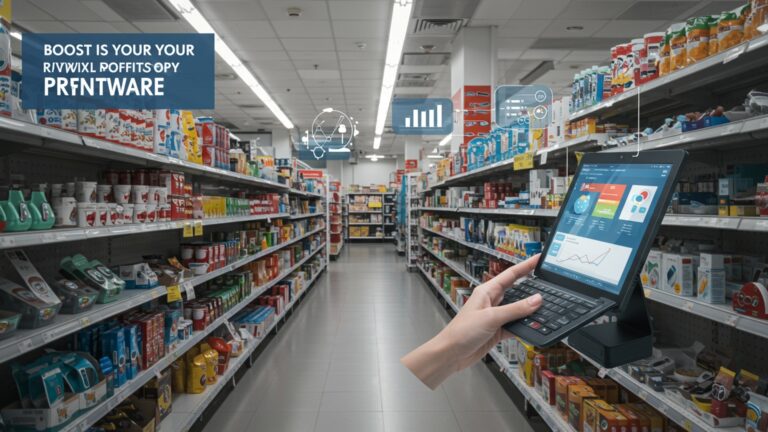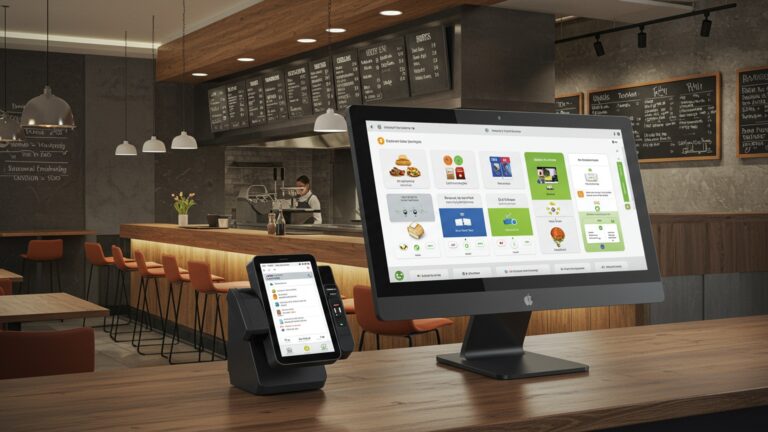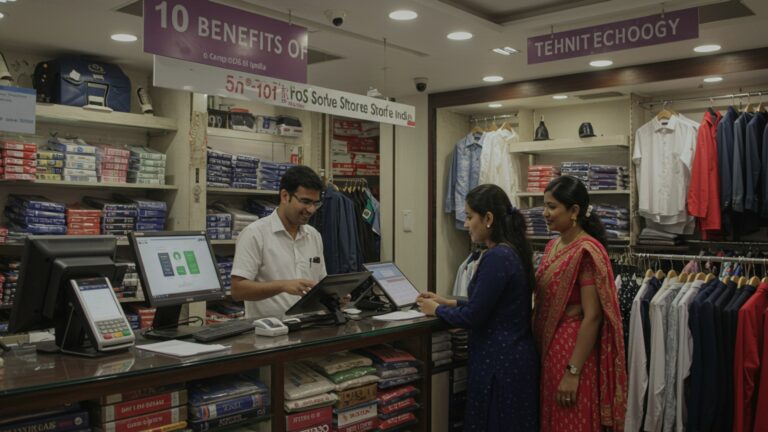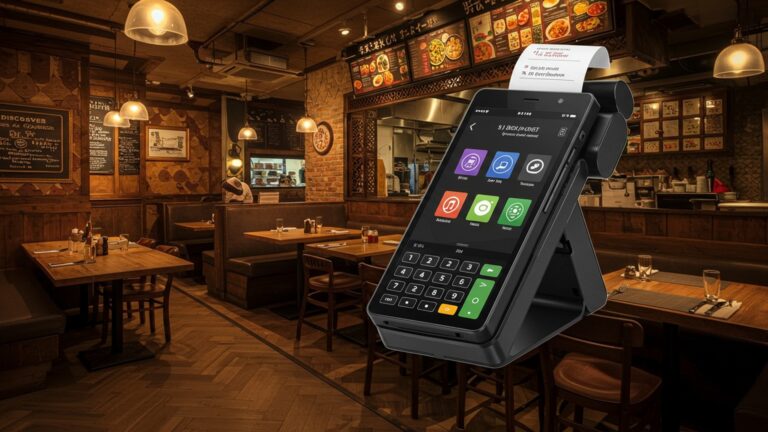How to Master Inventory Management POS India 10 Strategies for Success
The dynamic landscape of Indian retail, driven by unprecedented e-commerce growth and evolving consumer expectations, necessitates an agile approach to stock control. Businesses navigating both traditional storefronts and burgeoning online channels grasp that inefficient inventory directly impacts profitability and customer loyalty. Modern inventory management POS India systems offer the crucial real-time visibility required to optimize stock levels, prevent costly stockouts during peak seasons like Diwali. reduce dead stock across diverse supply chains, from urban hypermarkets to rural distribution hubs. Leveraging predictive analytics and seamless integration, mastering these systems transforms operational complexities into a strategic advantage, ensuring businesses can adapt swiftly to market shifts and deliver consistent value in a competitive, digitized economy.

Understanding the Core: What is Inventory Management and POS?
In the bustling marketplace of India, efficient operations are the backbone of any successful business, whether it’s a small boutique in Mumbai or a large electronics chain in Delhi. At the heart of these operations lies inventory management POS India. But what exactly do these terms mean. why are they critical?
- Inventory Management
- POS (Point of Sale) System
Simply put, inventory management is the systematic process of overseeing and controlling the ordering, storage. use of a company’s inventory – from raw materials to finished products. It involves tracking stock levels, orders, sales. deliveries. The goal is to have the right products in the right quantities at the right time, avoiding both stockouts (lost sales) and overstocking (wasted capital, storage costs).
A POS system is where your customer makes a payment for products or services at your store. It’s the “point” where a retail transaction is completed. Modern POS systems are far more than just cash registers; they are integrated software and hardware solutions that can manage sales, process payments, track inventory, manage customer data. even handle employee management. For businesses in India, a robust POS system is often the central nervous system of their retail operations.
When these two powerful concepts merge, you get an integrated system where every sale automatically updates stock levels, providing real-time insights crucial for strategic decision-making. This synergy is particularly vital in the dynamic and diverse Indian market, where consumer preferences and supply chain complexities demand agility.
Strategy 1: Implement a Modern, Integrated POS System
The foundation of mastering inventory management POS India lies in choosing the right technological partner. A modern POS system is not just for processing transactions; it’s a powerful tool that integrates sales data directly with your inventory records.
- Real-world Application
- Key Features to Look For
- Cloud-based Accessibility
- Scalability
- User-Friendly Interface
- Offline Capability
- Integration with E-commerce
Consider a multi-brand electronics store in Bangalore. Without an integrated POS, when a customer buys a smartphone, an employee would manually update a spreadsheet or a physical ledger. This is prone to errors and delays. With a modern POS, the moment the sale is completed, the system automatically deducts that smartphone from the inventory count across all relevant channels (online store, other branches). This provides an immediate, accurate picture of stock levels.
Allows you to manage inventory from anywhere, a boon for businesses with multiple outlets or remote management.
Can grow with your business, accommodating more products, stores. transactions.
Essential for quick employee adoption and reduced training time.
essential for areas with inconsistent internet connectivity.
Seamlessly syncs online and offline sales and inventory.
According to a report by RedSeer Consulting, the adoption of digital POS solutions is rapidly increasing in India, driven by the need for operational efficiency and better customer experience. Investing in a robust system is the first, non-negotiable step.
Strategy 2: Achieve Granular Inventory Categorization and SKU Management
You can’t manage what you don’t clearly define. Effective inventory management POS India starts with meticulous categorization and assigning unique Stock Keeping Units (SKUs) to every item.
- Definitions
- Categorization
- SKU (Stock Keeping Unit)
- Actionable Takeaway
Grouping similar products together (e. g. , “Men’s Apparel,” “Electronics,” “Groceries”). This helps in understanding sales trends by category.
A unique alphanumeric code that identifies a product down to its specific attributes like size, color, style. brand. For example, a red, large, V-neck t-shirt from Brand X might have a different SKU than a blue, medium, V-neck t-shirt from the same brand.
Develop a consistent SKU naming convention and stick to it. This allows your POS system to accurately track each variant, preventing stock discrepancies and simplifying reordering. For instance, a clothing retailer in Jaipur might use a SKU like TSHIRT-VN-RED-L-BRANDX . This clarity is invaluable for precise tracking.
// Example of a structured SKU
Product_Type-Style-Color-Size-Brand_ID
e. g. ,
SHOE-SNEAKER-BLK-9-NIKE001 (Black Nike Sneaker, Size 9)
BAG-BACKPACK-BLU-OS-ADIDAS002 (Blue Adidas Backpack, One Size)
Strategy 3: Leverage Real-time Data for Accuracy
The power of an integrated inventory management POS India system lies in its ability to provide real-time data. This means that as sales occur, inventory levels are updated instantly, giving you an accurate picture of what’s in stock at any given moment.
- Why Real-time Matters
- Prevents Stockouts
- Reduces Overstocking
- Enhances Customer Experience
- Supports Multi-channel Sales
- Case Study
Knowing instantly when an item is low allows for timely reordering. Imagine a popular restaurant in Delhi running out of a key ingredient during peak dinner hours – real-time tracking helps avoid this.
Avoids tying up capital in slow-moving items by showing you what isn’t selling.
You can confidently tell customers if an item is in stock, whether in-store or at another branch, reducing frustration.
Critical for businesses selling both online and offline, ensuring inventory syncs across all platforms.
A popular saree shop in Varanasi that started selling online found its stock often mismatched between its physical store and e-commerce portal. By implementing a POS that updated inventory in real-time, they eliminated double-selling and improved customer satisfaction significantly. Their online customers now see accurate stock levels, leading to fewer cancelled orders.
Strategy 4: Optimize Reorder Points and Safety Stock
One of the most strategic aspects of inventory management POS India is setting intelligent reorder points and maintaining appropriate safety stock levels. This prevents both stockouts and excessive inventory.
- Definitions
- Reorder Point
- Safety Stock
- Calculation Example
- Average daily sales: 10 units
- Supplier lead time: 5 days
- Reorder Point = (Average daily sales Lead time) + Safety Stock
- If Safety Stock = 20 units, then Reorder Point = (10 5) + 20 = 70 units. When stock hits 70, reorder.
- Actionable Advice
The minimum quantity of an item that triggers a new order from your supplier. It’s calculated to ensure new stock arrives before current stock runs out, considering lead time and daily sales.
An extra quantity of an item held in inventory to mitigate risk of stockouts due to unexpected demand fluctuations or delays in supplier lead times.
Your POS system should be able to track sales velocity for each SKU and help you calculate optimal reorder points. Regularly review and adjust these points based on seasonal demand, supplier reliability. market trends. For instance, a festive season for a gift shop in Kolkata would require higher safety stock for popular items.
Strategy 5: Leverage Sales Data and Forecasting
Your POS system collects a treasure trove of sales data. Mastering inventory management POS India means turning this raw data into actionable insights for demand forecasting.
- Data Points to examine
- Sales Velocity
- Seasonal Trends
- Promotional Impact
- Product Lifecycles
- Forecasting Techniques
- Historical Data Analysis
- Moving Averages
- Weighted Averages
- Qualitative Forecasting
- Practical Tip
How quickly specific products are selling.
Products that sell more during festivals (Diwali, Eid, Christmas), holidays, or specific times of the year.
How discounts or marketing campaigns affect sales volumes.
Identifying fast-moving, slow-moving. obsolete items.
The most common method, using past sales to predict future demand.
Calculating the average demand over a specific period.
Giving more weight to recent sales data.
Incorporating expert opinions or market research for new product launches or significant market shifts.
Many advanced POS systems offer built-in reporting and analytics tools that can generate these forecasts for you. Use them to anticipate demand for upcoming seasons or events, ensuring you have enough stock without overcommitting. A supermarket chain in Chennai, for example, can predict demand for fresh produce by analyzing historical sales patterns, reducing spoilage and ensuring availability.
Strategy 6: Conduct Regular Inventory Audits (Cycle Counting & Physical Inventory)
Even with the most sophisticated inventory management POS India, discrepancies can arise. Regular audits are crucial to maintaining data accuracy and identifying the root causes of shrinkage.
- Types of Audits
- Physical Inventory
- Cycle Counting
- Comparison: Physical Inventory vs. Cycle Counting
Feature Physical Inventory Cycle Counting Frequency Annually/Semi-annually Daily/Weekly/Monthly (continuous) Scope All items Subset of items Disruption High (often requires store closure) Low (can be done during business hours) Accuracy Snapshot in time, can be error-prone due to volume Ongoing, helps pinpoint errors faster Cost Higher (labor, lost sales during closure) Lower (integrated into daily operations) Benefit Comprehensive overview Continuous improvement, early error detection - Actionable Advice
A complete count of all items in your store or warehouse. This is often done annually or semi-annually and can be disruptive to operations.
A method where a small, specific subset of inventory is counted on a regular, rotating basis. For example, counting 5-10% of items every day or counting a specific product category each week. This is less disruptive and helps identify issues continuously.
Implement cycle counting using your POS system’s tools. Focus on high-value items or those with frequent discrepancies. This proactive approach ensures your digital inventory always mirrors your physical stock. A jewellery store in Surat would benefit immensely from cycle counting its high-value diamonds and gold items frequently, minimizing potential losses.
Strategy 7: Efficiently Manage Returns, Damages. Shrinkage
Returns, damages. shrinkage (loss due to theft, error, or spoilage) are unavoidable parts of retail. Effective inventory management POS India must have robust processes to handle these efficiently to maintain accurate stock levels and minimize financial loss.
- Handling Returns
- Your POS system should allow for quick and accurate processing of returns, immediately updating inventory if the item is resalable, or moving it to a “damaged” or “return to vendor” category.
- Example
- Managing Damaged Goods
- Create specific inventory locations or categories within your POS for damaged, defective, or expired goods. This prevents them from being sold and allows for proper disposal, return to vendor, or write-off.
- Tip
- Addressing Shrinkage
- Shrinkage can be a significant drain. Use your POS data to identify patterns (e. g. , specific products frequently missing, particular locations with higher discrepancies).
- Implement security measures (CCTV, inventory tags) and ensure strict adherence to receiving and dispatch procedures.
- Expert Insight
A customer returns a slightly worn garment to a fashion retailer in Pune. The POS system allows the associate to mark it as “damaged – non-resalable” so it doesn’t mistakenly get put back on the sales floor.
Establish clear protocols for damage assessment and approval within your team.
“Shrinkage isn’t just theft; it’s often operational inefficiency. A robust POS system helps pinpoint where losses occur, enabling businesses to plug those leaks,” states a prominent retail consultant specializing in the Indian market.
Strategy 8: Optimize Vendor Relationship Management
Your inventory is only as good as your supply chain. Strong vendor relationships are a cornerstone of effective inventory management POS India. It’s about more than just placing orders; it’s about collaboration and reliability.
- Key Aspects
- Reliable Lead Times
- Negotiate Favorable Terms
- Supplier Performance Tracking
- Communication
- Real-world Example
Work with vendors who consistently meet their delivery schedules. Delays directly impact your inventory levels and potential sales.
Discuss minimum order quantities (MOQs), payment terms. return policies. Smaller MOQs can reduce carrying costs, especially for smaller businesses.
Use your POS or a separate system to track vendor performance – on-time delivery, order accuracy, product quality. This data is invaluable for future purchasing decisions.
Maintain open lines of communication. Inform vendors of anticipated demand spikes (e. g. , festival sales) and provide feedback on product performance.
A grocery store in Kochi relies on local farmers for fresh produce. By building strong relationships and communicating demand forecasts derived from their POS sales data, they ensure a consistent supply of fresh goods, minimizing spoilage and meeting customer expectations. They might even use the POS to send automated reorder alerts to vendors.
Strategy 9: Empower and Train Your Team
Technology is only as good as the people using it. To truly master inventory management POS India, your entire team, from sales associates to warehouse staff, needs to be well-trained and accountable.
- Comprehensive Training
- POS System Proficiency
- Inventory Best Practices
- Problem Solving
- Accountability and Ownership
- Assign specific inventory responsibilities to team members (e. g. , one person for receiving, another for cycle counts in a specific section).
- Utilize user permissions within your POS to track who makes changes to inventory records, fostering accountability.
- Personal Anecdote
Ensure all staff know how to correctly process sales, returns, receive new inventory. conduct basic inventory checks using the POS.
Train on proper shelving, labeling, first-in, first-out (FIFO) principles for perishable goods. handling damaged items.
Equip them to handle common inventory issues, such as mislabeled items or discrepancies. whom to report them to.
I once worked with a small bookstore in Kolkata struggling with stockouts of popular Bengali novels. After implementing a new POS, we found a significant improvement once we trained all staff on accurate receiving and sale entry. assigned specific inventory sections for daily spot checks to different team members. The errors plummeted.
Strategy 10: Embrace Analytics and Reporting for Continuous Improvement
The final, crucial strategy for mastering inventory management POS India is to continuously assess the data your system provides and use it to refine your strategies. This isn’t a one-time setup; it’s an ongoing process of optimization.
- Key Reports from Your POS
- Sales Reports
- Inventory Turnover Rate
- Days Sales of Inventory (DSI)
- Shrinkage Reports
- Vendor Performance Reports
- Actionable Insights from Analytics
- Identify Underperformers
- Optimize Pricing
- Refine Purchasing
- Predict Future Trends
Identify top-selling products, slow-movers. seasonal trends.
How quickly you sell and replace inventory. A high rate is generally good, indicating efficient sales and minimal holding costs.
The average number of days it takes to sell existing inventory.
Pinpoint where and when inventory losses are occurring.
Evaluate supplier reliability and quality.
Use sales data to identify products that aren’t selling. Consider promotions, bundling, or even discontinuation to free up capital and shelf space.
examine sales at different price points to find the sweet spot.
Use turnover rates and DSI to make more informed purchasing decisions, reducing carrying costs and improving cash flow.
Combine historical data with market intelligence to anticipate shifts in demand, especially in a fast-evolving market like India.
Regularly schedule time to review these reports, perhaps weekly or monthly. make data-driven adjustments to your inventory management processes. This iterative approach is what truly leads to mastery in the complex world of retail and inventory management POS India.
Conclusion
Mastering inventory management with a robust POS system in India is no longer an option. a necessity for sustainable growth. The ten strategies we’ve explored provide a clear roadmap to optimize your stock, reduce waste. ultimately boost your bottom line. Don’t let inventory become a bottleneck; instead, view it as a strategic asset that, when managed meticulously, significantly enhances profitability. My personal tip for businesses, especially those navigating the festive rush in bustling markets like Delhi’s Chandni Chowk, is to start small. Implement one or two strategies diligently, perhaps focusing on automating your purchase orders or establishing daily cycle counts for your top five fastest-moving products. This incremental approach builds momentum. As recent trends show a surge in online-to-offline buying, accurate, real-time stock visibility across all channels, driven by your POS, becomes paramount. Remember the electronics store in Bengaluru that cut dead stock by 15% in a quarter simply by leveraging their POS analytics for better reordering – that could be your story. Embrace these insights, take decisive action. watch your business thrive. Your journey to impeccable inventory control begins now.
More Articles
How to Select the Best POS Software in India for Your Business
How to Master Grocery Store Operations with Efficient POS Software
Learn 7 Ways the Best POS System Transforms Your Garment Shop Operations
Top 10 Benefits of POS Software for Clothing Stores in India
7 Proven Ways to Streamline Your Billing Process and Boost Cash Flow
FAQs
Why is mastering inventory management so crucial for businesses in India?
Good inventory management in India helps you avoid stockouts, reduce carrying costs, prevent spoilage or obsolescence. ultimately boost your profits. With diverse supply chains and varying consumer demands, it’s key to staying competitive and ensuring smooth operations.
How does a Point-of-Sale (POS) system specifically improve inventory management?
A modern POS system automates tracking every sale, return. transfer, updating your stock levels in real-time. This eliminates manual errors, provides accurate data for forecasting. helps you identify fast-moving or slow-moving items instantly, making reordering much smarter.
What are some core strategies to really get a handle on inventory?
Focus on demand forecasting, implementing a robust stock-taking process (like cycle counting), optimizing reorder points, leveraging strong vendor relationships. using technology for real-time tracking. Also, categorize your inventory (e. g. , ABC analysis) to prioritize management efforts effectively.
Are there unique inventory challenges businesses face in the Indian market?
Absolutely. India presents challenges like fragmented supply chains, varying regional tax structures, logistics complexities, infrastructure issues. diverse consumer preferences. Dealing with these often requires flexible systems and a deep understanding of local market dynamics.
When picking a POS system for inventory, what should I look for?
Look for features like real-time stock updates, multi-location inventory support (if needed), robust reporting and analytics, integration capabilities (e. g. , with accounting software), ease of use, scalability. local support. Ensure it’s tailored to your industry’s specific needs.
Is implementing new tech enough, or do business processes also need an overhaul?
Technology is a powerful enabler. it’s not a magic bullet. For true mastery, you need both. A great POS system paired with streamlined processes, well-trained staff. clear inventory policies will yield the best results. Tech without good processes is just automating chaos.
I run a small business. Do these complex strategies apply to me too?
Yes, absolutely! While the scale might differ, the principles remain the same. Even for small businesses, understanding your stock, preventing waste. optimizing purchases can significantly impact your bottom line. Start with basic automation and grow from there; the benefits are universal.






